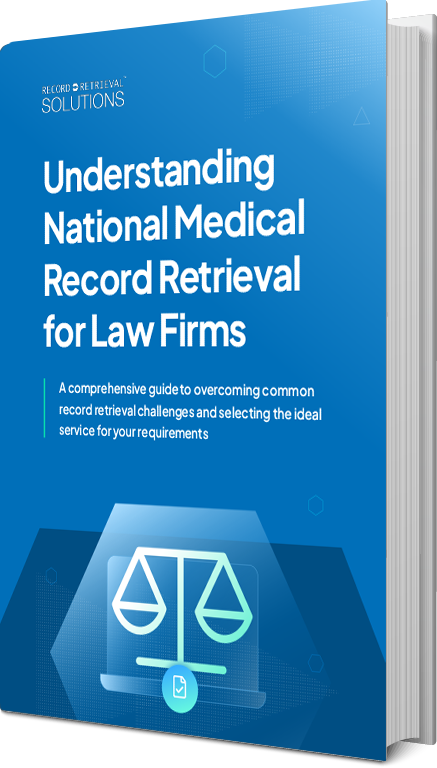Pharmaceutical research and development (R&D) play a pivotal role in pushing the boundaries of innovation within the life sciences sector, offering new avenues for improved healthcare outcomes.
With the power to transform how diseases are understood and treated, pharmaceutical R&D paves the way for addressing some of the most pressing global health challenges of our time.
Understanding the intricate process of pharmaceutical R&D is crucial, as it encompasses drug discovery, clinical trials, and navigating the regulatory landscape, all of which are vital components that ensure the safety and efficacy of new treatments.
As the industry evolves, recent trends such as collaborations, open-source models, and precision medicine are reshaping how we approach drug development and delivery.
In this article, we will explore the key aspects of pharmaceutical R&D, the factors that shape its trajectory, and the collaborations that contribute to its success.
We’ll also examine the challenges faced, offering insights into the future potential and impact of ongoing research efforts on global healthcare.
Importance of Pharmaceutical Research
Pharmaceutical research is a cornerstone of modern medicine, playing a crucial role in the development of new drugs that have a profound impact on public health.
Investment in research and development (R&D) has shown significant growth, from USD 108 billion in 2006 to USD 141 billion in 2015. Recent data from 2024 to 2025 further underlines the ongoing substantial investment in this essential field.
The global increase in R&D spending underscores the pivotal role that pharmaceutical research plays in discovering new therapies and understanding the interactions between drugs and living organisms. Historical achievements such as the development of insulin and penicillin initiated transformative changes in population health, showcasing the potential of pharmaceutical research.
Every year, the U.S. pharmaceutical industry introduces numerous drugs that offer substantial medical benefits, yet it’s essential to recognize their associated contribution to rising healthcare costs.
This duality highlights the significance of a robust R&D sector in the pharmaceutical industry, laying the groundwork for health science companies to develop and introduce innovative treatments to the market.
Advancing Healthcare through Innovation
In the pharmaceutical landscape, innovation is paramount. Pharmaceutical companies are continuously streamlining their R&D processes by restructuring them into more manageable units and employing cost-efficient outsourcing to enhance efficiency.
This strategic adjustment is crucial in a field where complexity and costs continue to increase. Collaborative approaches have emerged as vital components of innovation.
Partnerships and venture capital investments have become integral, providing access to a broader array of skills and technologies necessary to tackle the complex challenges of drug development.
Notable collaborative models, such as crowdsourcing and open innovation, enable the industry to tap into the full spectrum of the R&D value chain, ensuring sustained progress in drug discovery and development.
Despite these efforts, the Food and Drug Administration (FDA) reports a decline in new drug development and approvals. This trend persists notwithstanding heightened R&D investments and technological advancements, hinting at underlying challenges in pharmaceutical innovation.
Yet, history stands as a testament to the industry’s potential; the creation of insulin and penicillin are prime examples of how innovative pharmaceuticals can revolutionize public health.
To overcome current obstacles, the pharmaceutical sector must continue embracing innovative methodologies and the relentless pursuit of collaboration to maintain its trajectory of healthcare improvement.
Addressing Global Health Challenges
Addressing global health challenges requires a multifaceted approach that encompasses collaboration among academia, industry, and government. These partnerships are pivotal for overcoming drug development challenges and enhancing approval rates, which have observed declines since the 2000s.
Significant contributions from entities like the National Institutes of Health (NIH), which allocates over $41.7 billion annually to global biomedical research, underscore the necessity of such collaborative efforts. This funding proves instrumental in advancing our understanding of and combating global health issues.
Pharmaceutical research in this context is often hampered by high R&D costs and inefficiencies, necessitating innovative methodologies such as virtual R&D and strategic collaborations. Embracing open innovation can significantly mitigate these challenges, potentially reducing costs and expediting drug development processes.
Moreover, increasing diversity in clinical trials by incorporating underrepresented ethnic and racial minority groups is crucial to developing inclusive and effective global treatments.
Despite technological advancements and rising R&D investment, significant hurdles remain in the path of drug development. This reality accentuates an urgent need for more efficient research strategies tailored to tackle prevailing and emerging global health issues.
Strategically addressing these challenges will ensure that pharmaceutical research remains a robust pillar in the fight against global health threats, ultimately translating investments into tangible benefits for public health worldwide.
Key Components of Pharmaceutical R&D
Pharmaceutical R&D is a cornerstone activity for life science companies, encompassing rigorous processes that span from the laboratory to the marketplace. The goal is to deliver novel therapeutic solutions, including drugs and medical devices, that effectively address medical needs.
This journey is resource-intensive, with R&D investments climbing significantly—from USD 108 billion in 2006 to USD 141 billion in 2015. The stakes are high in this field, with precision and safety being paramount, as new drugs must often outperform existing treatments.
Government backing through funding and supportive policies often provides the essential scaffold for these high-risk endeavors, ensuring that innovations can progress even when possibilities seem slim.
Drug Discovery
Drug discovery marks the initial and vital phase of pharmaceutical research and development (R&D), where innovative solutions begin their journey.
This stage involves identifying new molecules that can be transformed into effective treatments or preventive solutions for various diseases. Typically, the process starts with identifying a biological target, such as a receptor or protein, that plays a crucial role in disease development.
Researchers compile thousands of potential drug candidates, but only a select few proceed past early testing due to the challenges surrounding efficacy and safety. Candidate drugs must exhibit a measurable biological response both in vitro and in vivo.
These steps ensure that only the most promising candidates advance, establishing a foundational role critical to the pharmaceutical pipeline.
Clinical Trials
Clinical trials represent a critical juncture in pharmaceutical research and development (R&D), where drugs undergo a series of evaluations to assess their safety and efficacy.
Organized into phases I through IV, each trial phase has unique objectives designed to rigorously scrutinize the treatment. Before any drug can be marketed, it must achieve FDA approval, which hinges on conclusive data from these trials.
Notably, only about 12 percent of drugs entering clinical trials receive FDA approval, underscoring the meticulous scrutiny involved. The financial burden of conducting these trials is substantial, often bankrolled by large pharmaceutical firms.
However, recent technological advances, such as digital tools, promise to enhance data accuracy; yet, there is a need for further investment and exploration to capitalize on these innovations fully.
Regulatory Approvals
Securing regulatory approval is a pivotal stage in the pharmaceutical research and development (R&D) process, ensuring that a drug meets rigorous standards for safety, quality, and efficacy. Regulatory agencies, like the FDA in the US and the European Medicines Agency, critically assess new drug treatments, requiring evidence that these therapies address significant unmet medical needs and provide distinct benefits over existing alternatives.
The approval criteria encompass a drug’s ability to enhance public health outcomes—a paramount consideration in the assessment process. Consequently, these regulatory agencies play an integral role on a global scale, transitioning effective drugs from the development phase into widespread clinical practice, thereby transforming promising research into tangible health benefits.
Recent Trends in Pharmaceutical R&D
The pharmaceutical industry’s dedication to research and development (R&D) is more immense than ever, with over $100 billion spent in the U.S. alone in 2022. Despite high costs, the sector sees a mere 30% of new drugs advancing from Phase II to Phase III clinical trials due to a significant attrition rate.
The journey from concept to market typically spans 12 to 15 years, often incurring costs exceeding $1 billion per drug. Modern strategies in portfolio management aim to streamline R&D through precise cost management and improving returns on investment.
While the arena of drug development has experienced a decline in FDA approvals compared to the early 2000s, advancements in drug target identification continue to offer promising avenues for discoveries, albeit not without hurdles.
Increased Collaboration and Partnerships
The landscape of pharmaceutical research is increasingly defined by collaboration and strategic partnerships, particularly with the National Cancer Institute’s Technology Transfer Center (NCI TTC) playing a pivotal role.
It facilitates critical collaborations and licensing partnerships with pharmaceutical companies of all sizes, which is instrumental in granting access to cutting-edge technologies and research knowledge. Large pharmaceutical companies often engage with universities to develop new drugs, supplementing NIH grants with direct funding for applied research. Such partnerships are vital, representing a noteworthy support system even when venture capital contributions, albeit smaller in the grand scheme, bolster R&D expenditures for burgeoning firms. Whether in biotechnology or traditional pharmaceuticals, partnerships across specialties such as chemistry, biology, and data science are fundamental, fostering innovation through diverse roles in business development, communications, and marketing.
Adoption of Open-Source and Virtual R&D Models
Pharmaceutical companies are increasingly adopting open-source innovation and virtual R&D models to stay at the forefront of cutting-edge research.
These innovative approaches enable companies to transcend traditional boundaries by accessing a wide range of skills and technologies essential for addressing the evolving challenges in drug development. Open innovation is characterized by a collaborative engagement with external partners, which is key to discovering and validating novel drug targets.
On the other hand, virtual R&D leverages external collaborations without the need for extensive in-house infrastructure, thus offering significant flexibility. The embrace of these models reflects the industry’s response to the growing complexity and demands of modern pharmaceutical research, enabling firms to enhance their research capabilities while maintaining agility.
The Rise of Precision Medicine
Precision medicine is an emerging paradigm in pharmaceutical research, emphasizing the development of personalized drug treatments tailored to individual genetic profiles. This approach marks a significant departure from the one-size-fits-all model, striving for an era where drug treatments are precisely suited to specific disease markers in patients. It holds tremendous potential for enhancing the efficacy and safety of therapies, particularly in fields such as oncology and the treatment of rare genetic conditions.
By closely analyzing genetic, environmental, and lifestyle factors, precision medicine aims to revolutionize patient outcomes and healthcare delivery. As pharmaceutical companies increasingly focus on this approach, it underscores the growing demand for innovative, personalized interventions in healthcare.
Factors Influencing R&D Spending
Pharmaceutical research and development (R&D) represent a cornerstone of the life sciences industry, bearing significant financial implications. With expenditures escalating, the U.S. industry alone committed over $100 billion by 2022 to this pivotal endeavor.
As companies attempt to bring new drug treatments to fruition, understanding the factors that drive such substantial commitments is crucial. Key influences include the likelihood of a drug’s progression through various trial phases and the regulatory hurdles set by entities such as the FDA.
The journey from discovery through clinical trials to market authorization is extensive, costly, and fraught with challenges, emphasizing the volatile nature of pharmaceutical investments.
Anticipated Revenues and Market Potential
Anticipated revenues and the allure of market potential are significant drivers of research and development (R&D) spending in the pharmaceutical industry.
Companies gauge the viability of their drug projects based on the performance of existing blockbuster drugs, which potentially reveal market size and consumer demand.
From 2015 to 2020, the generics business experienced robust growth, with an annual growth rate of 12%, underscoring its position as a lucrative market segment.
Moreover, it’s projected that by 2025, emerging markets will account for a substantial share of pharmaceutical sales, emphasizing the strategic shift by companies, such as those in Biotechnology and Cancer Therapies, to diversify their income streams beyond traditional strongholds.
Multinational entities continuously adapt, capitalizing on the expanding financial potential in countries with burgeoning economies, as underscored by forecasts reaching USD 500 billion.
Impact of Public Policy and Regulations
Public policy and regulatory frameworks play a pivotal role in shaping pharmaceutical research and development (R&D). Targeted public research funding often influences the trajectory of pharmaceutical innovation, as documented in influential studies, such as those published in the Journal of Policy Analysis and Management.
Regulatory agencies, such as the FDA, impose stringent safety, efficacy, and quality standards to ensure public safety and effectiveness in drug treatments. Navigating the regulatory landscape is a non-negotiable route for pharmaceutical companies aspiring to market their pioneering drugs.
Public policy further steers these organizations towards collaborations and licensing agreements, exemplified by NIH Technology Transfer-mediated arrangements with leading pharmaceutical companies.
As these regulations tighten and evolve, they not only fortify but also facilitate innovation efforts within the life sciences sector.
High Costs of Drug Development
The substantial financial burden of drug development results from both the advanced technology utilized and the rigorous demands of the clinical trials process.
With only about 12% of clinical trial participants achieving FDA approval, the risks are significant. Recent estimates place the average R&D cost per successful drug between $1 billion and $2 billion.
Despite technological advances and larger, more refined clinical trials and infrastructures, many drugs fail early in development, escalating overall expenditures. Yet, the commitment remains steadfast, driven by the potential for significant public health benefits, cost-effective healthcare, and ultimately, reduced hospital stays.
As the landscape for life science companies continues to evolve, understanding these complexities becomes increasingly essential for stakeholders, including those in the legal and insurance sectors.
Biopharmaceutical Collaborations
Biopharmaceutical collaborations form the backbone of innovation and progress in the pharmaceutical industry.
These partnerships, particularly those between early-stage companies and prominent institutions such as the National Cancer Institute (NCI), have been shown to increase the odds of successful financial exits significantly.
The pharmaceutical industry thrives on a network of collaborations that often extend to academic institutions. Such partnerships are not solely born out of necessity but are strategic moves designed to pool resources, expertise, and funding.
For instance, Harvard’s Office of Technology Development receives 4–5% of its funding from industry collaborations, illustrating a potent financial incentive. Moreover, since the 2007 economic crisis, mergers and acquisitions (M&As) have been pivotal in offsetting revenue losses, especially those resulting from the expiration of blockbuster drug patents.
The role of collaborations is expanding as it increasingly includes multidisciplinary alliances engaging patients, healthcare providers, and regulatory bodies, thereby bringing patient-centered strategies to drug development.
Enhancing Success Rates for Early-Stage Companies
The pharmaceutical landscape presents a significant challenge for early-stage companies seeking to bring innovative drugs to market. Collaborations mediated by organizations like the NCI are instrumental, with successful ventures being nearly 2.9 times more frequent among those that engaged in such partnerships.
This collaborative strategy not only amplifies the reach but also boosts the credibility of nascent biotech firms. Pharmaceutical companies often act as central nodes in a network of collaborations with biotechnology firms and academic institutions.
These partnerships provide critical resources and expertise that are essential for the success of life science companies. However, the path to market is fraught with challenges. Less than 12 percent of drugs that enter phase I clinical trials make it to the market, underscoring the critical role of strategic collaborations.
Additionally, mergers and acquisitions (M&As) have become essential for maintaining robust R&D pipelines, as they rely heavily on external sources to introduce new research projects and drug candidates. Thus, substantial investment in R&D is crucial, serving as a vital catalyst for growth, innovation, and competitive edge in a rapidly evolving market.
Strategic Alliances and Licensing Partnerships
Strategic alliances and licensing partnerships have become a standard mechanism for growth and innovation within the pharmaceutical industry. The Top 20 pharmaceutical companies have established extensive networks of collaborations facilitated by the NCI TTC through agreements such as Licensing Agreements, Material Transfer Agreements, Clinical Trial Agreements, and Cooperative Research and Development Agreements.
These collaborations extend to partnerships with academic institutions, biotechnology companies, and even other pharmaceutical firms. This complex web of networks allows major pharmaceutical companies to act as central hubs.
For academic partners, such strategic alliances can be financially beneficial, as evidenced by institutions like Harvard University, which draws a significant portion of its funding from such collaborations.
Following the economic downturn in 2007, mergers and acquisitions gained prominence, enabling pharmaceutical firms to counterbalance the financial impact of declining blockbuster drug revenues.
Emerging drug entities often depend on these collaborative agreements with larger firms for the critical financing and development support necessary, especially in the absence of substantial internal revenues.
Fostering Biomedical Innovation
Innovation is the lifeblood of the pharmaceutical industry. As companies face soaring R&D costs, maintaining sustainability while driving innovation is a delicate balance to strike.
Pharmaceutical companies are developing new and innovative research and development (R&D) models to navigate high attrition rates and extended timelines in drug development. Open innovation models and strategic changes have proven necessary to bolster innovation potential, given the sector’s historically low R&D efficiency. Collaborative efforts bring together academia, government, and industry, offering fresh perspectives to tackle barriers in drug development pathways.
These collaborations create avenues for innovation, ensuring the sharing of knowledge and resources that accelerate the discovery and development of new drugs. Despite these efforts, the disconnect between the invested resources and the number of new molecular entities being successfully launched remains a significant challenge.
Thus, strategic innovations are crucial for meeting investor expectations and enhancing the return on investment in this high-stakes, high-reward industry.
Differences Between Life Sciences, Pharmaceuticals, and Biotechnology
Life sciences, pharmaceuticals, and biotechnology are interconnected, yet each maintains distinct objectives. Life sciences delve into the core processes of living organisms and their environments, offering foundational understanding critical to further advances in pharmaceuticals and biotechnology.
On the other hand, the pharmaceutical industry focuses on discovering, developing, and marketing drugs specifically for therapeutic use, aiming to improve health outcomes by addressing medical needs.
Biotechnology differentiates itself by utilizing biological systems and processes to develop a range of products and technologies applicable across healthcare, agriculture, and industry. Despite these varied goals, pharmaceutical and biotechnology companies both heavily rely on research and development, employing specialists in chemistry and biology to spearhead innovative projects.
Key Differences:
- Life Sciences: Focuses on understanding living organisms.
- Pharmaceuticals: Targets drug discovery and commercialization for therapy.
- Biotechnology: Utilizes biological systems across various sectors.
In summary, while the life sciences provide the underlying knowledge, pharmaceuticals aim for drug-based solutions, and biotechnology utilizes living systems to address broader technological challenges.
Challenges in Pharmaceutical R&D
Pharmaceutical research and development (R&D) is a cornerstone of the life sciences industry, yet it inherently involves numerous challenges that complicate drug development and market approval processes.
Despite increases in R&D spending and technological advancements, the approval rates of new drugs by the Food and Drug Administration (FDA) have remained relatively low since the 2000s. The journey from R&D investment to drug approval is typically complex and protracted, often spanning more than a decade.
This timeline includes thorough evaluations and numerous trials. Unfortunately, a substantial portion of R&D expenses is invested in drugs that do not reach the market, with only around 12% of drugs entering phase I clinical trials ultimately proceeding to approval.
This high attrition rate is compounded by rising labor costs, intense competition for skilled researchers, and the increasing demand for more complex clinical trials. As such, the drug development arena is fraught with risk, where many projects are either terminated or fail to yield a marketable product.
Navigating Intellectual Property Issues
Intellectual property (IP) is a vital component of pharmaceutical research and development (R&D), providing the legal framework that protects novel drug inventions from unauthorized reproduction and exploitation.
Successfully navigating IP issues is crucial for life sciences companies as it ensures legitimate financial returns on their hefty investments in drug development. The labyrinth of IP laws demands a strategic approach, where companies must not only develop pioneering drugs but also secure robust patent protection.
This involves filing patents at an early stage to deter competitors and prolong market exclusivity rights. However, this landscape is marred by challenges such as patent disputes, generic competition, and ever-evolving legislative changes. Companies must also be aware of international IP laws when operating on a global scale, adding another layer of complexity to their operations. Legal experts in the life sciences must therefore collaborate closely with R&D teams to simultaneously innovate and safeguard their investments, navigating the intricate web of IP regulations.
Ensuring Patient Safety and Compliance
Ensuring patient safety is a paramount concern throughout the pharmaceutical R&D pipeline, necessitating stringent compliance measures and rigorous testing protocols to maintain the highest standards.
From the initial stages of drug discovery to post-market surveillance, a comprehensive framework is mandated to uphold the efficacy and safety of drug treatments. A critical element of this safety assurance is the clinical trial process, which plays a pivotal role in collecting data and evaluating the safety of new drugs before they are introduced to the market.
Incorporating digital technologies in these trials has notably improved the convenience and precision of data collection, thereby enhancing adherence to safety protocols and regulatory standards. These regulatory approvals, integral to the R&D process, are designed to ensure that drugs meet safety and quality benchmarks before being released to the public.
Even after market entry, the process doesn’t cease; post-market surveillance remains critical, as it continuously monitors and confirms the safety and effectiveness of drugs, fostering ongoing patient protection. This exhaustive approach underscores the industry’s commitment to the steadfast safeguarding of public health.
Future Prospects in Pharmaceutical Research
As the pharmaceutical industry continues to evolve, its prospects largely rest on the robust research and development (R&D) efforts that drive innovation.
By 2025, the industry is projected to maintain its status as a global leader in R&D investment, with companies like Novartis, Roche, Pfizer, and Merck & Co. leading the charge with substantial financial commitments.
Despite the promise of new drug treatments, the path to market remains daunting, with an average success rate in drug approval hovering around 4.1%. This low probability underscores the need for strategies such as open innovation, enabling companies to access and integrate external expertise. By fostering collaboration and utilizing collective expertise, pharmaceutical companies aim to navigate the high-stakes world of drug development more efficiently.
Emerging Technologies and Innovations
The integration of emerging technologies into pharmaceutical research heralds a new era of innovation and discovery. Techniques such as combinatorial chemistry, DNA sequencing, high-throughput screening (HTS), and computational drug design are revolutionizing the drug discovery process.
These technologies reduce development timelines significantly and enhance success rates, although they also contribute to increased R&D costs. The rise in clinical trial size and sophistication demanded by modern regulations further pressures the financial aspect, pushing companies to adapt quickly.
Collaborative efforts amongst academia, industry, and government play an instrumental role in leveraging these technologies to navigate complex development pathways. Incremental innovations, such as novel drug dosages and delivery systems, underscore an industry that is continually evolving to meet growing health demands.
Potential Impact on Healthcare Outcomes
The role of pharmaceutical research in advancing healthcare is undeniable. By continually testing hypotheses and disease models, innovative pharmaceutical entities have a transformative impact on both patient and population health outcomes.
Historical breakthroughs, such as the introduction of insulin and penicillin, serve as a testament to the power of sustained research and development. As the industry shifts gears towards embracing digital innovations, the potential for improving drug development efficiencies grows, promising enhanced healthcare outcomes.
Furthermore, collaborative and licensing agreements among top pharmaceutical companies fortify innovation pipelines, resulting in the development and marketing of approximately 8,000 drugs. These efforts significantly bolster public health, demonstrating the far-reaching effects of comprehensive pharmaceutical research and its pivotal role in shaping the future of healthcare.
How Record Retrieval Solutions Supports Pharmaceutical Companies
Pharmaceutical companies face mounting pressure to streamline clinical trials, prove drug efficacy, and comply with strict regulatory standards—all of which demand fast, accurate, and comprehensive access to medical records. That’s where Record Retrieval Solutions (RRS) plays a pivotal role.
RRS helps pharmaceutical and life science organizations accelerate research timelines by retrieving medical records from a broad network of healthcare providers across the U.S. Whether you need patient histories for site selection, documentation to support adverse event reporting, or records to build real-world evidence (RWE) datasets, RRS ensures timely and compliant access to the information you need.
By partnering with RRS, pharmaceutical teams benefit from:
- Fast turnaround times—often within 10–14 days
- HIPAA-compliant processes that meet FDA, EMA, and IRB documentation standards
- Customizable record indexing and summaries to support protocol development, pharmacovigilance, and submission readiness
- Nationwide coverage and provider outreach that simplifies multi-site trial support
In an era where precision, speed, and data integrity are non-negotiable, RRS empowers pharmaceutical companies to focus on innovation while we handle the logistics of record retrieval.
Conclusion
In conclusion, pharmaceutical research plays a pivotal role in the life sciences sector, driving innovation and advancing medical treatments. Research-based pharmaceutical companies are at the forefront of this endeavor, strategically navigating key factors such as innovation rates, R&D costs, and success probabilities.
The substantial increase in global R&D spending, growing from USD 108 billion in 2006 to USD 141 billion in 2015, underscores the significance of these efforts. Notably, 16 of the top 50 companies by R&D investment in 2014/2015 were pharmaceutical companies, highlighting their vital contribution to global health advancements.
Pharmaceutical research has been instrumental in making monumental discoveries, such as insulin and penicillin, which have had a profound impact on public health. Companies involved in early-stage drug development, clinical trials, and biotechnology contribute to these groundbreaking innovations through open innovation strategies.
Finally, understanding the dynamics of R&D structures—whether as knowledge creators, integrators, or leveragers—enables pharmaceutical companies to enhance their development processes. In the ever-evolving landscape of global health, the continued focus on pharmaceutical research and development (R&D) remains crucial for developing pioneering drugs and meeting the growing demand for prescription medications.
FAQS
What is the role of pharmaceutical R&D in life sciences?
Pharmaceutical research and development are crucial for discovering and commercializing new medical advancements. It involves extensive collaboration across fields such as chemistry, biology, and data science to develop pioneering drug treatments.
How much do companies invest in R&D?
R&D investment has significantly increased, with global expenditures by pharmaceutical and biotechnology companies rising from USD 108 billion in 2006 to USD 141 billion in 2015.
How prevalent are pharmaceutical companies among top R&D investors?
In the fiscal year 2014/2015, 16 out of the top 50 companies worldwide for total R&D investment were pharmaceutical companies.
How has digital technology affected clinical trials?
Digital technologies have enhanced the convenience and perceived accuracy of data collection in clinical trials, according to patient surveys.
What are the specialties involved in R&D activities?
R&D activities encompass various specialties, including chemistry, biology, and data science, to support the development of both small-molecule and biologic drugs.






